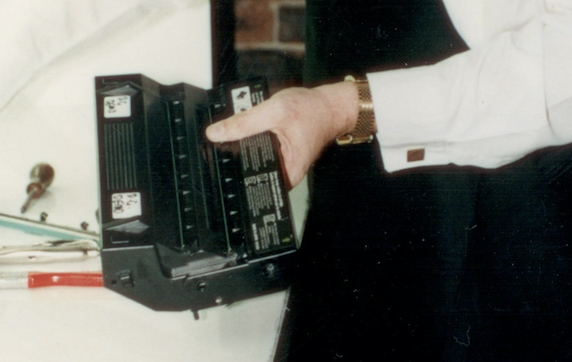Resellers Have Sub-Par Office Products Websites
Resellers Tend to Have Sub-Par Office Products Websites
 In this article, the second part of a seven-part series, I’m going to identify the deficiencies of a typical office products resellers website, explain how it can be graded, what must be worked on to improve its grade and, finally, why it’s so important this objective must be accomplished. In Part I, I explained the mission-critical nature of working to improve Domain Authority (DA). Here, in Part II it should become clear the DA objective cannot be accomplished, unless the effort to do so is built on the foundation of a world-class website.
In this article, the second part of a seven-part series, I’m going to identify the deficiencies of a typical office products resellers website, explain how it can be graded, what must be worked on to improve its grade and, finally, why it’s so important this objective must be accomplished. In Part I, I explained the mission-critical nature of working to improve Domain Authority (DA). Here, in Part II it should become clear the DA objective cannot be accomplished, unless the effort to do so is built on the foundation of a world-class website.
-Part I – Domain Age and Authority
-Part II – Website Grade
-Part III – Backlinks
-Part IV – Traffic Ranking
-Part V – Social Shares
-Part VI – Social Authority
-Part VII – Conclusions
I’ll be continuing to publish this series of articles over the next couple of weeks and attempting to fill gaps that may have been left from the original article, “How the Office Products Industry has Failed the Resellers“.
Introduction:
In a 250 unit case study carried out during 2015/16 I found the grade of a selection of sites from the office products industry averaged just 35 while the minimum acceptable grade, necessary for embarking on a digital business transformation, should be targeted at no less than 80.
Most business owners must recognize we’re in the middle of a massive transformation from an analog to a digital world. However, these same owners may not recognize quite so readily that, unless they commence their own digital transformation then ultimately, they will not survive.
Businesses that fail to deploy websites capable of earning high performance grades will be left further behind as the digital transformation continues.
It’s free, and it’s easy, for small business owners to determine what grade their websites currently earn. A simple Google search for “website graders” identifies many sites with tools for generating site performance grades. I’m a big advocate for HubSpot and you can use their HubSpot Website Grader to determine a site’s grade. However, there are many others that perform just as well, seven of which can be accessed from Kevan Lee’s “Indispensable Website Graders” article.
There are four important categories of requirements underlying high-quality websites;
-Accessibility
-User experience
-Marketing
-Technology
These are shown in the table below along with each of their sub-category components, all of which play their individual roles in establishing the overall quality of the website. You will see there’s overlap – for example, “Internal Links” are important to all four categories, whereas “Incoming Links” [for example] is specific to the marketing category and not the other three.
| Accessibility | Experience | Marketing | Technology |
| Internal Links | Facebook page | Incoming links | Meta tags |
| Code Quality | Popularity | Meta tags | Domain age |
| URL Format | Amount of content | Facebook page | Images |
| Page Titles | Twitter account | Social interest | Internal links |
| Headings | Images | Popularity | Code quality |
| Mobile | Internal links | Amount of content | URL format |
| URL format | Domain age | Headings | |
| Printability | Printability | ||
| Mobile | Internal links | Mobile | |
| Server behavior | Page titles | Server behavior | |
| Headings | |||
| Analytics |
Building a website that incorporates these characteristics requires a range of human resource skill sets, including those with advanced technical skills, proficient content writers and skilled graphic designers. Because of the broad scope of requirements, it’s unlikely a single person will have all the necessary skills to develop a site that scores a grade at the target level.
Although there are numerous platforms available that permit amateurs (even those with modest technical skills) to build sites of a quality that would have been unthinkable just a few years back, an amateurs ability to ensure it’s optimized to meet all the requirements is remote.
In typically neglecting to build and deploy high-quality sites, office products and supplies resellers are overlooking the necessity for their websites to become the foundation for their digital business transformations and that inadequate sites compromise transformations from the outset.
Conclusions:
There are over one billion websites on the internet but most of the traffic goes to a tiny percentage of the highest performing sites. Unfortunately, because most small business websites are low quality, they grade poorly, they lack strategy, know-how, and investment and are unlikely to ever meet owners hopes and expectations in terms of traffic, lead generation and business development
To be fair, I must point out that many sites with large traffic volumes also don’t score well on the grading platforms, a fact that may make some wonder if a high-quality site is really such a necessary requirement. However, to counter this potential fallacy, I must also point out that poor quality, high traffic sites, usually belong to larger enterprises that had already established brand recognition in the analog era and, despite their website limitations, have been able to leverage their analog brand equity into site traffic.
For a small business with little to no brand equity, developing web traffic on the back of an analog past is not feasible.
The new digital era provides a unique opportunity for savvy, small business owners to level the playing field in their battle with much larger enterprises and to subsequently leverage a strong digital presence to help develop their business in local markets.
Learn more about a unique Digital Transformation Service – everything you need for a digital upgrade and the tools needed for developing new business with “Blue Ocean” caliber customers. Just click on the link below.
Despite my obvious passion for small businesses to establish the very highest quality websites, a website in itself will never be a single “silver-bullet” solution and, owners who mistakenly adopt a “build-it-and-they-will-come” approach, are all but guaranteed to fail.
A high-quality website is no more than the foundation for future success and, as I’ve written on numerous occasions, the value proposition, the business intelligence, and the continued development of real, face-to-face relationships in local markets, all remain critically important as small businesses strive to prosper in our twenty-first-century digital era.
Bottom line, both small and medium-sized local businesses must focus on deploying high-quality websites that add value for their target audience. The future combination of technology, alongside a strong physical presence in local markets, can lead to sustainable competitive advantages over much larger enterprises.
If you missed my eight-part series on the aftermarket tipping point, please check out my new eBook, it’s just published, it’s FREE, and it contains a thorough examination of the office supplies industry and a path to the $20 billion growth opportunity for independent resellers.
Who is Ian Elliott? Did you find this blog, Resellers Tend to Have Sub-Par Office Products Websites, helpful? Please comment below. You can contact Ian by email or by phone at +1(615)478-3544












Leave a Comment
Want to join the discussion?Feel free to contribute!